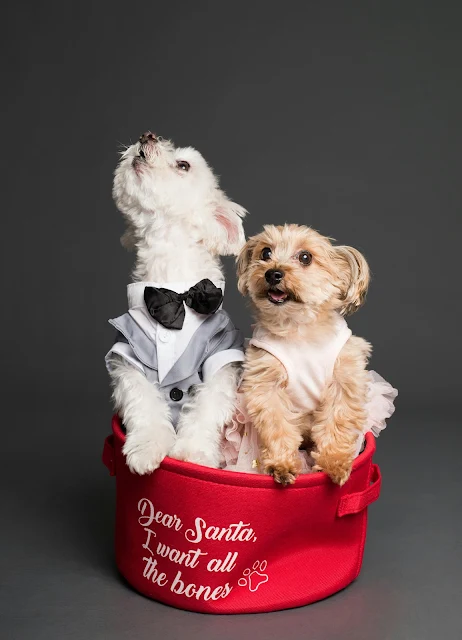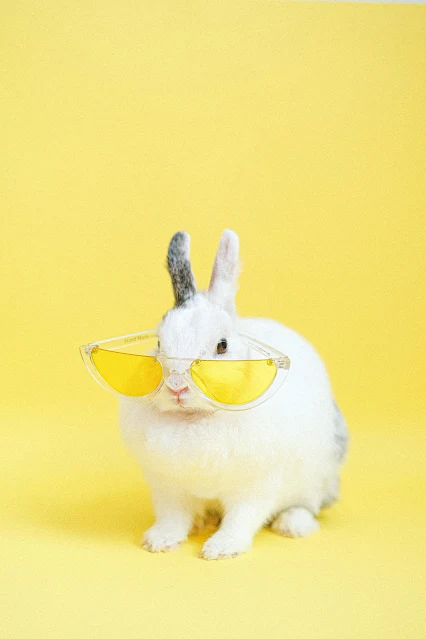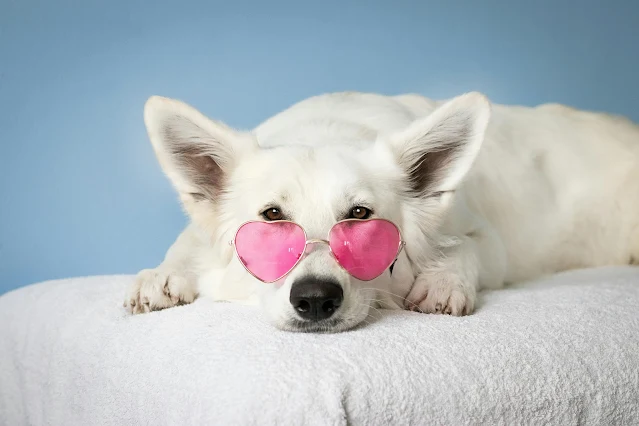If you open the photo album on any official's phone, chances are you'll see that most of the photos are of their pets. "Even though the photos might look similar, there's a slight difference in how they tilt their heads," says one official. "My phone is running out of memory because there are thousands of pet photos. I’d rather delete my selfies than those cute moments with my pets."
Many pet owners are into pet photography to capture the growth of their pets, while social media platforms make sharing these adorable moments easy. However, most pet owners don't have the high-end gear or the skills, so they often turn to professional pet photography studios.
Right now, pet photography trends include everything from simple ID photos to festive-themed shoots, seahorse-style photos, travel pics, and more. Prices can vary from a few hundred to a few thousand dollars, with some top-tier services reaching tens of thousands of dollars.
Terry, for example, booked a session with a professional photographer for her dog. The photographer gave her a list of things to do before the shoot, like grooming the pet and bringing its favorite toys. She also had to schedule a time to ensure one-on-one service. Before the actual shoot, Terry was advised to walk her dog to tire it out, so it wouldn't be too hyper during the session.
"I thought it wouldn't take long, but just putting on makeup and matching our outfits took about two hours," she explained. "We had three outfit options, but since the dog wasn’t cooperating, we could only do one set indoors. I plan to do this every year, but next time I might try a travel photo shoot, which could be better for my big husky."
As Terry's experience shows, even with a professional setup, taking the perfect pet photo isn't easy. Some shots turn out great, but the hit rate can be low, which affects the overall value for money. A lot depends on the photographer's skill in directing both the pet and the owner during the shoot. Yet, because of the cute sample photos and the desire to pamper their pets, many owners are willing to give pet photography a shot.
Pets are like family, and their shorter lifespans make people want to capture every moment. Despite the similarities to portrait photography, the job of a pet photographer isn't always as rewarding financially. A pet photographer shared that during peak times, the income can reach 20,000 to 30,000 dollars, but usually, it's less than 10,000. The initial costs for renting a space, decorating, and buying equipment can exceed 130,000 dollar, not to mention the ongoing costs of marketing and promotion.
Plus, professional pet photography often involves a whole team, including assistants, lighting technicians, costume designers, and makeup artists, depending on the complexity of the shoot. All these factors contribute to the high costs, explaining why pet photography services often come with a hefty price tag.
Pet photography hasn't quite caught on beyond first-tier cities. Many studios offering pet photography also provide grooming, pet care, and other services. This "all-in-one" approach makes sense, considering the consumption patterns in these cities.
Much like traditional photography, the pet photography market is seeing a Matthew effect, with larger studios and top-tier photographers taking the lion's share of the business. Some popular topics are fully booked six months to a year in advance.
With the rapid growth of the pet photography market, more individual photographers and smaller studios are diving in, but maintaining a steady clientele can be challenging. Also, many new photographers lack experience with pet care, which requires an understanding of pet behavior and communication skills.
In photography, portrait photographers can learn through structured training programs, but pet photographers don't have a similar pathway due to the lack of professional certification. Plus, each pet is unique, requiring different approaches to guiding them during a shoot.
In many cases, pet photography isn't just about snapping cute pet pics. Pet owners often want to be in the photos, which demands even more from the photographer. To achieve the best results, a photographer needs to coordinate the pet's and owner's outfits and capture the right interaction between them.
Pet photography is a unique industry that serves both pet owners and pets. It involves thorough communication before, during, and after the shoot. Although the pet photography segment is growing, it hasn't fully reaped the benefits of the expanding market, largely due to the lack of industry regulation and oversight. Still, with the rising trend of pet-related spending, pet photography is poised to be a booming sector.
- Get link
- X
- Other Apps
- Get link
- X
- Other Apps



Comments
Post a Comment